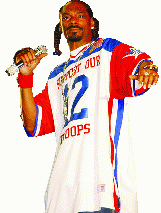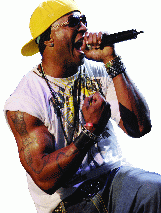The Evolution Of Music Part-VIII
The Evolution Of Music Part-VIII
 Hip hop is a cultural movement, of which music is a part. Hip hop music for the most part is itself composed of two parts: rapping, the delivery of swift, highly rhythmic and lyrical vocals; and DJing and/ or producing, the production of instrumentation either through sampling, instrumentation, turntablism or through beatboxing, the production of musical sounds through vocalized tones. Hip hop arose in the early 1970s in The Bronx, New York City. Jamaican immigrant DJ Kool Herc is regarded by many as the progenitor of hip hop; he brought with him from Jamaica the practice of toasting over the rhythms of popular songs.
Emcees originally arose to introduce the soul, funk and R&B songs that the DJs played, and to keep the crowd excited and dancing; over time, the DJs began isolating the percussion break of songs (when the rhythm climaxes), producing a repeated beat that the emcees rapped over. By the beginning of the 1980s, there were popular hip hop songs, and the celebrities of the scene, like LL Cool J, gained mainstream renown. Other performers experimented with politicized lyrics and social awareness, or fused hip hop with jazz, heavy metal, techno, funk and soul. New styles appeared in the latter part of the 1980s, like alternative hip hop and the closely related jazz rap fusion, pioneered by rappers like De La Soul.
Hip hop is a cultural movement, of which music is a part. Hip hop music for the most part is itself composed of two parts: rapping, the delivery of swift, highly rhythmic and lyrical vocals; and DJing and/ or producing, the production of instrumentation either through sampling, instrumentation, turntablism or through beatboxing, the production of musical sounds through vocalized tones. Hip hop arose in the early 1970s in The Bronx, New York City. Jamaican immigrant DJ Kool Herc is regarded by many as the progenitor of hip hop; he brought with him from Jamaica the practice of toasting over the rhythms of popular songs.
Emcees originally arose to introduce the soul, funk and R&B songs that the DJs played, and to keep the crowd excited and dancing; over time, the DJs began isolating the percussion break of songs (when the rhythm climaxes), producing a repeated beat that the emcees rapped over. By the beginning of the 1980s, there were popular hip hop songs, and the celebrities of the scene, like LL Cool J, gained mainstream renown. Other performers experimented with politicized lyrics and social awareness, or fused hip hop with jazz, heavy metal, techno, funk and soul. New styles appeared in the latter part of the 1980s, like alternative hip hop and the closely related jazz rap fusion, pioneered by rappers like De La Soul.
The crews Public Enemy and N.W.A. did the most to bring hip hop to national attention, beginning in the late 1980s; the former did so with incendiary and politically charged lyrics, while the latter became the first prominent example of gangsta rap. Gangsta rap is a kind of hip hop, most importantly characterized by a lyrical focus on macho sexuality, physicality and a dangerous criminal image. Though the origins of gangsta rap can be traced back to the mid-1980s style of Philadelphia’s Schoolly D and the West Coast’s Ice-T, the style broadened and came to apply to many different regions in the country, to rappers from New York, such as Notorious B.I.G and influential hip hop group Wu-Tang Clan, and to rappers on the West Coast, such as Too Short and N.W.A. A distinctive West Coast rap scene spawned the early 1990s G-funk sound, which paired gangsta rap lyrics with a thick and hazy sound, often from 1970s funk samples; the best-known proponents were the rappers 2Pac, Dr. Dre and Snoop Dogg. Gangsta rap continued to exert a major presence in American popular music through the end of the 1990s and into the 21st century, especially after the breakthrough of rapper Eminem.
1980s; the former did so with incendiary and politically charged lyrics, while the latter became the first prominent example of gangsta rap. Gangsta rap is a kind of hip hop, most importantly characterized by a lyrical focus on macho sexuality, physicality and a dangerous criminal image. Though the origins of gangsta rap can be traced back to the mid-1980s style of Philadelphia’s Schoolly D and the West Coast’s Ice-T, the style broadened and came to apply to many different regions in the country, to rappers from New York, such as Notorious B.I.G and influential hip hop group Wu-Tang Clan, and to rappers on the West Coast, such as Too Short and N.W.A. A distinctive West Coast rap scene spawned the early 1990s G-funk sound, which paired gangsta rap lyrics with a thick and hazy sound, often from 1970s funk samples; the best-known proponents were the rappers 2Pac, Dr. Dre and Snoop Dogg. Gangsta rap continued to exert a major presence in American popular music through the end of the 1990s and into the 21st century, especially after the breakthrough of rapper Eminem.


